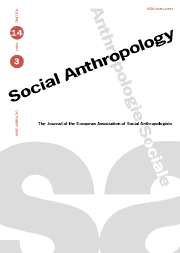No CrossRef data available.
Article contents
A tomb for Columbus in Santo Domingo. Political cosmology, population and racial frontiers
Published online by Cambridge University Press: 13 August 2001
Abstract
A state formation in the national order of things seems unthinkable without the state's everyday and ritual attempts to fashion ideas about what makes its people a people. This paper argues that we should examine makings of national populations in terms of historical constructions of cosmologies. The author analyses how one modern state, the Dominican Republic, produced particular ideas about ‘the Dominican people’. Dominican elites and the Dominican state made the Dominican population's origins ‘white, Hispanic and Catholic’ by claiming descent from Christopher Columbus. From the late 1870s, the Dominican republic has taken for granted that Columbus's tomb was in Santo Domingo. The state claimed that his remains had been buried on Dominican land. It appropriated the navigator's dead body as a material and symbolic resource for making essentialising and territorialising notions of the Dominican people. Bones of ancestors and heroes may be important vehicles of validation in modern political struggles, struggles which simultaneously concern identities and territories. Being ‘objective’ artifacts, bones root, incorporate and authorise territorialised identity claims. The making of Dominican ideas about Columbus as a Dominican ancestor has been tied to construction of notions of white supremacy – or racism. The author argues that the Dominican state's ideas and practices were, and are, detrimental to black Dominicans. These ideas and practices also hurt Haitians who cross the Haitian-Dominican border in search of means of livelihood.
- Type
- Research Article
- Information
- Copyright
- © 2001 European Association of Social Anthropologists




